A few weeks ago, I saw a question in the Building Code Forum’s Door & Hardware section asking about a piece of hardware that a member of the forum had seen on a fire door assembly. If you’re not familiar with the Building Code Forum, it’s a great place to ask code questions and have some code officials weigh in. I recognized the piece of hardware right away, and I think my answer surprised some of the other responders based on what they thought the purpose of the mysterious hardware item was.
Mark Kuhn and I spent last week in Denver with this year’s cohort of the Allegion Early Careers Program. We headed out on a field trip and I said to Mark, “I’m looking for a rachet release assembly…let me know if you see one.” If he thought it was a weird question, he didn’t let it show.
Working with new members of the industry and seeing the question (and answers) on the forum gave me an idea for a new type of post. There are all kinds of parts and pieces that play important roles in the operation of door openings, so I’ll be sharing some of them in future posts. If you have a favorite part or piece, or something you’re wondering about, send it along!
So here it is…the part that was posted on the Building Code Forum…
^This is a rachet release assembly. It is used with concealed vertical rod panic hardware or fire exit hardware. In the photo below, you can see two of them at the top of the doors, near the meeting stiles.
When the touchpad is used to retract the latch of the concealed vertical rod panic, the latch stays retracted until the door comes to a close. The rachet release plunger projects into a small hole in the face of the door (you can see the holes in the photo below), and projects the latch when the door reaches the closed position. There are shims provided to help position the plunger in the correct location on the door, and you can see the assembly on page 7 of the Von Duprin 98/9947 installation instructions.
The question about this part was posted on the Building Code Forum because the plunger was no longer correctly aligned with the hole in the fire door, and was preventing the door from closing. The hole had already been enlarged(!) but they were still misaligned – probably because the door was sagging. I recommended trying to address the door sag as a means of bringing everything back into the proper position.
You need to login or register to bookmark/favorite this content.

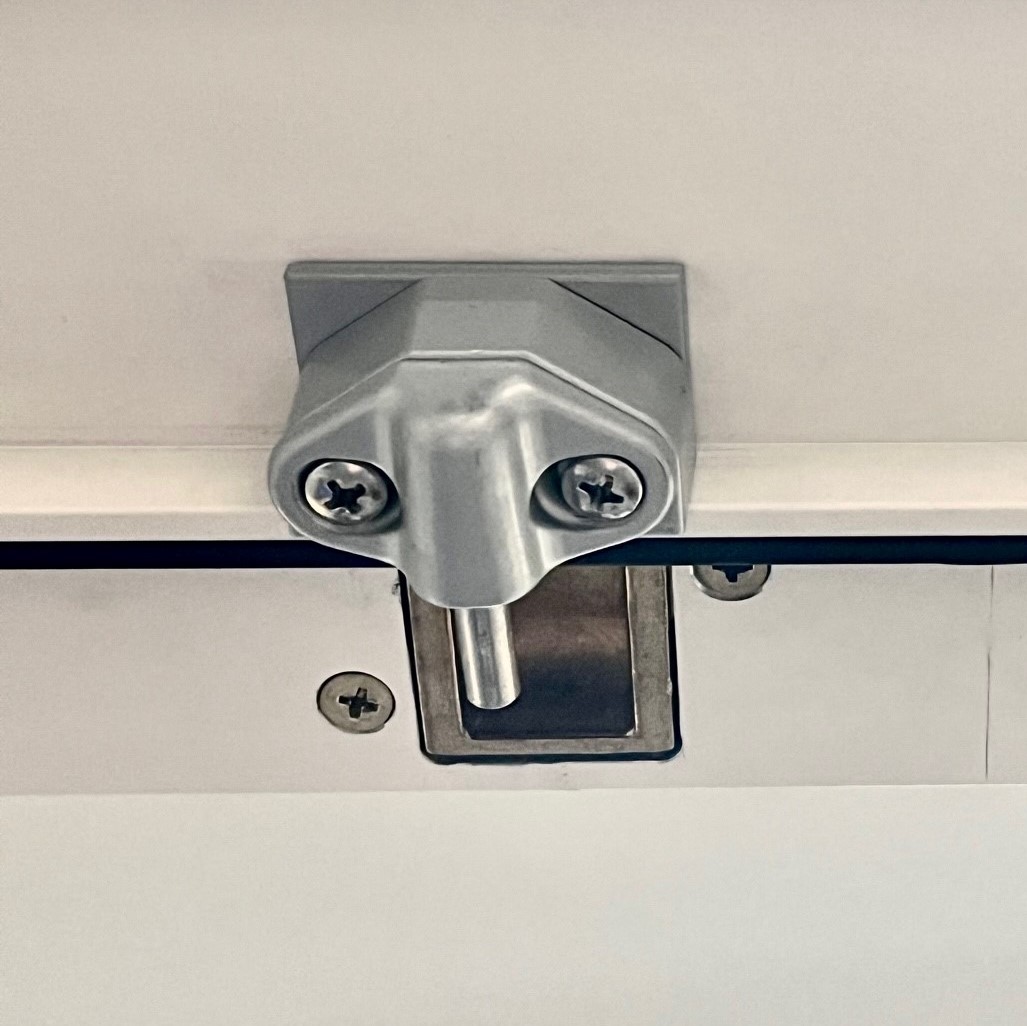
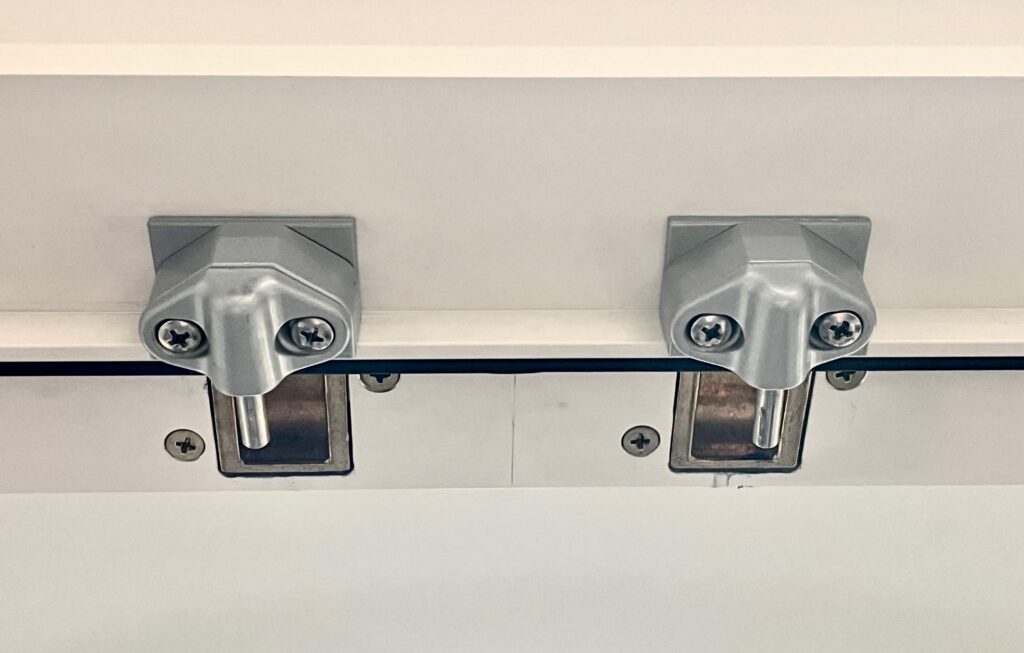
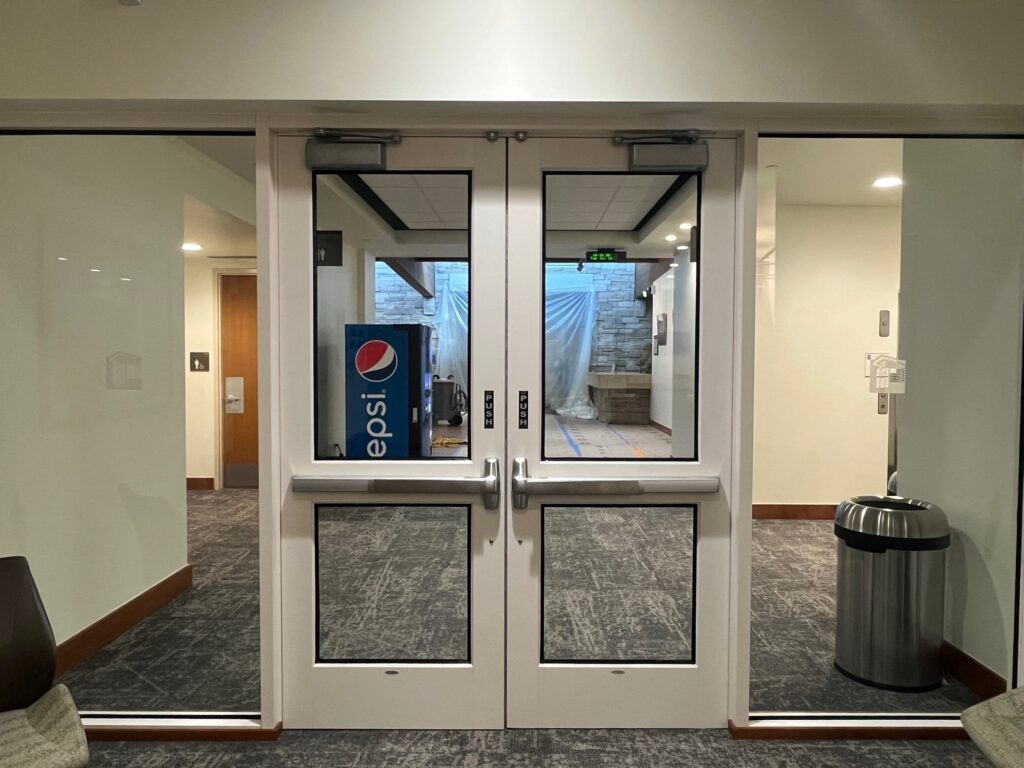
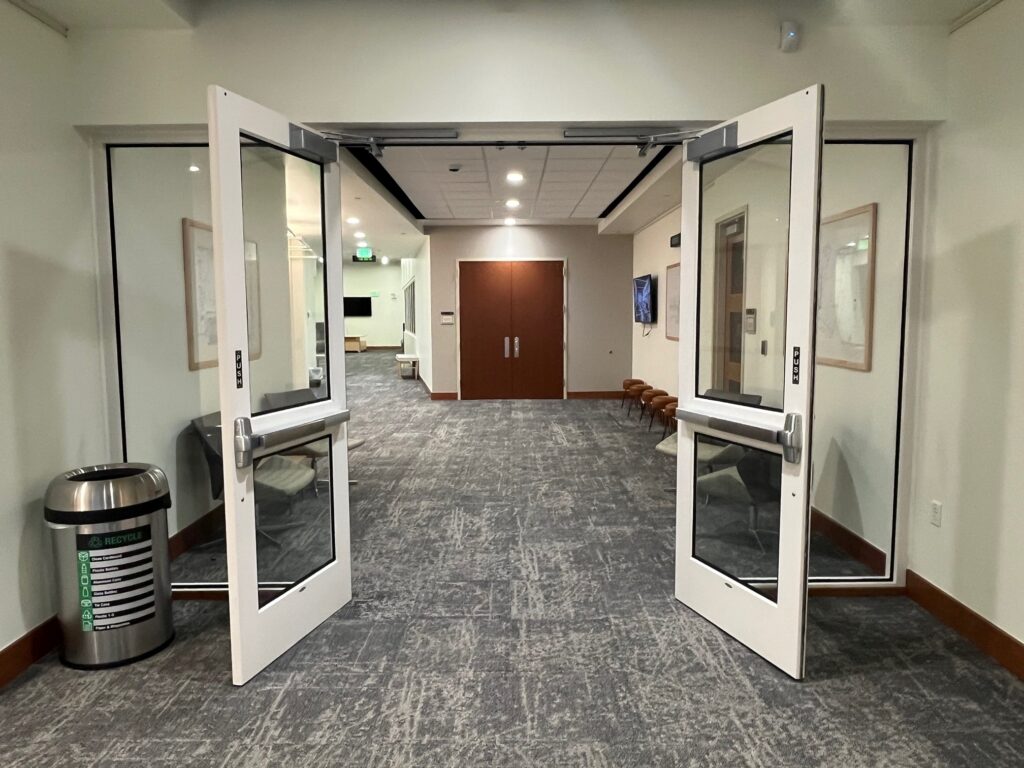

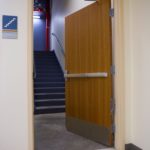



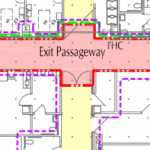


And, it is for that,exact reason why I do not use concealed Vertical Rod Panic Exit Devices
I can show you butchered doors and frames from use, abuse, misalignment, DYI’s trying to solve the problems. Nothing in this industry spells trouble than Concealed Vertical Rod Panic Devices
I don’t disagree with you David, they can be tough to keep operating properly. But you need to start sending me some of those photos of butchered doors! 🙂
– Lori